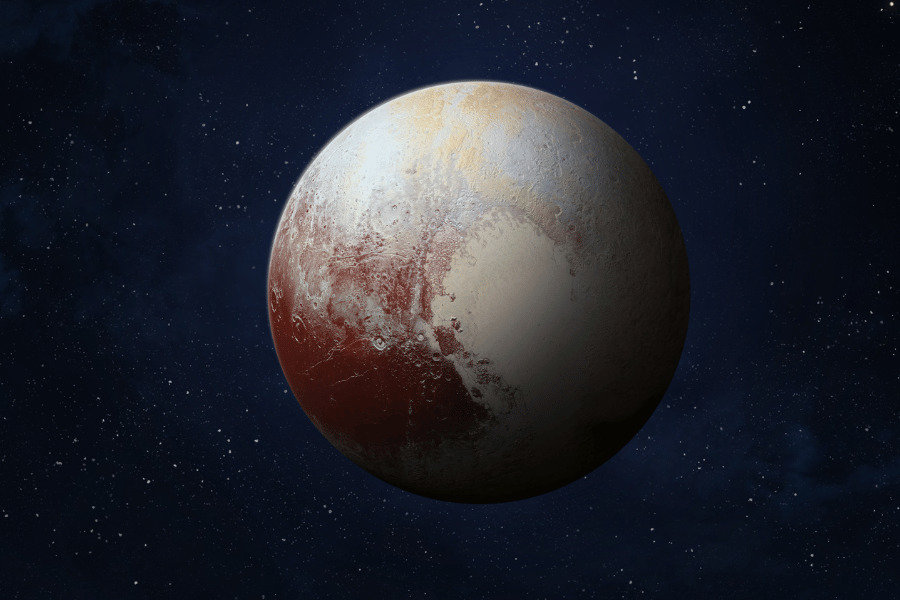Hey there, young space enthusiasts! Today, we’re embarking on an exciting journey to discover all about Pluto, the distant and mysterious member of our solar system.Get ready for a space adventure! Dive into an intergalactic adventure with simple explanations and discover the wonders of the dwarf planet beyond our solar system.
All About Pluto – Facts For Kids
Planet or Not? The Big Question
Is Pluto a planet? Well, scientists have been pondering this cosmic riddle for a while. Once considered the ninth planet in our solar system, Pluto got reclassified as a “dwarf planet” in 2006. But don’t worry, it’s still a fascinating world worth exploring!
The Planets Dance
Pluto loves to dance in the vast cosmic ballet with the other planets. It goes around the sun once, and that takes a really long time – about 248 years on Earth!Imagine having a birthday only once in two centuries!
The Moon Buddy – Charon
Pluto is not alone in its journey around the sun. It has a large moon named Charon, which is about half the size of Pluto. Imagine having a buddy to orbit around you in the vastness of space!
Apart from Charon, it has four smaller moons – Nix, Hydra, Kerberos, and Styx.
The Discovery of Pluto
The Dwarf Planet wasn’t always in the spotlight. It was discovered by the keen-eyed astronomer Clyde Tombaugh in 1930. Imagine being the first person to spot a brand-new world in the night sky!
Not-So-Heavy Weight
If you ever visit Pluto, you’ll feel super light! That’s because it’s gravity is much weaker than Earth’s. You might be able to jump really, really high – like a cosmic kangaroo!
The Gravity of the Situation
Pluto might be small, but it still has gravity! If you stood on its surface, you’d weigh much less than you do on Earth. It’s like having a mini workout every time you take a step!
Not Twins, But Still Cool
While Earth and Pluto are very different, they share some similarities. Both have icy landscapes, and they both love to spin on their axes. It’s like having a distant cousin in the solar system!
Pluto’s Heart-Shaped Love Note
One of the most intriguing features on Pluto’s surface is the heart-shaped region known as Tombaugh Regio. This heart is made up of bright, icy plains and is located near the equator. It captured the world’s attention when images from NASA’s New Horizons spacecraft revealed it during its historic flyby in 2015.
Aww, how sweet! It’s like Pluto is sending a love note to the entire solar system.
A Real Planet to Some
To some scientists and space enthusiasts, Pluto will always be a real planet. The debate continues, and that’s what makes astronomy so exciting – always discovering, debating, and learning!
The Kuiper Belt Connection
Pluto is part of the Kuiper Belt, a region of the solar system beyond Neptune that is populated by small, icy bodies. This belt is thought to be a remnant of the early solar system, providing insights into the conditions that led to the formation of planets.
The Icy Wonderland
Pluto is a small, icy world located in the distant reaches of our solar system, far beyond the familiar planets like Earth and Mars. Its surface is covered in a mix of ices, including nitrogen, methane, and carbon monoxide, creating a stunning, frosty landscape.
A Slow Spin
Pluto rotates on its axis very slowly, taking about 6.4 Earth days to complete one rotation. This leisurely spin adds to the uniqueness of Pluto’s celestial characteristics.
Atmosphere
Pluto has a thin atmosphere primarily composed of nitrogen, methane, and traces of other gases.
It’s surface exhibits a reddish tint, likely due to complex organic molecules called tholins that form in its atmosphere. Tholins are created when ultraviolet light from the sun interacts with methane and nitrogen.
All About Pluto Quick Facts
- Pluto is the only dwarf planet in our solar system with a heart.
- It’s named after the Roman god of the underworld.
- Pluto has a thin atmosphere of nitrogen, methane, and carbon monoxide.
- It’s one of the coldest places in our solar system – brr!
- Pluto’s daytime lasts for around 6.4 days on Earth.
- It’s smaller than Earth’s moon but packs a big punch in terms of intrigue.
- It has four little moons named Nix, Hydra, Kerberos, and Styx.
- The New Horizons spacecraft gave us close-up pictures of Pluto in 2015.
- It has a reddish color, adding a dash of flair to its icy surface.
And there you have it, young space explorers – a glimpse into the captivating world of Pluto! Keep looking up at the stars, because who knows what other cosmic wonders are waiting to be discovered. Until then, happy stargazing! 🚀✨

